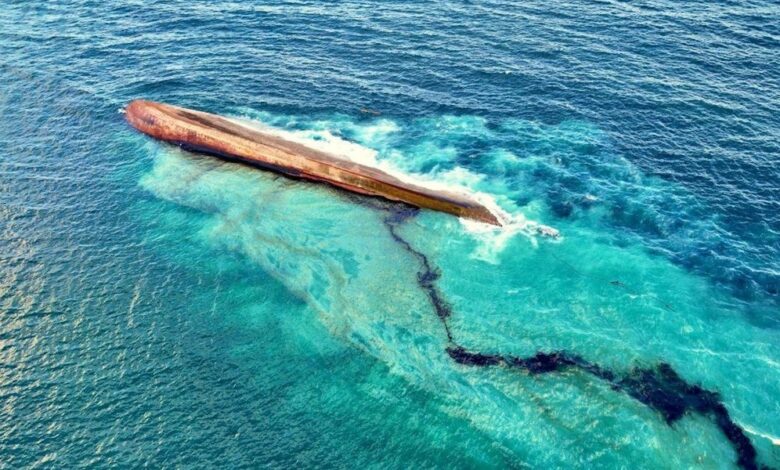Mystery behind Tobago spill partially resolved

The mystery behind last week’s big oil spill off Tobago has been partially resolved.
Analysis by Bellingcat, a Netherlands-based investigative journalism group, which has subsequently been corroborated by the government of Trinidad and Tobago shows that an articulated tug and barge were responsible for the environmental catastrophe. The whereabouts and ownership of the tug remain unknown, however.
On the morning of February 7, local authorities detected an oil slick spewing from a capsized vessel off the west coast of Tobago. The slick quickly hit the southwest shoreline of the Caribbean island with the nation’s prime minister declaring the accident a national emergency and thousands of volunteers helping in the subsequent clean-up.
The capsized vessel is wedged on a reef, with huge amounts of debris on the seafloor reported by divers, who also spotted a towing cable.
After reviewing much material the coast guard yesterday was able to confirm the vessel was an unpowered fuel barge that was being towed to Guyana by a Tanzania-registered, 1976-built tug called Solo Creed. The name of the 48-year-old barge, according to Bellingcat, is Gulfstream. The tug and barge are owned by Panamanian interests and have a history of moving Venezuelan oil.
“This situation should not result in a paradise lost, certainly not for Tobago. But we need those responsible to come clean and we need those responsible to know that they have to pay for this mess, that they are culpable as part of this mess,” Farley Augustine, the chief secretary of the Tobago House of Assembly told reporters yesterday.
